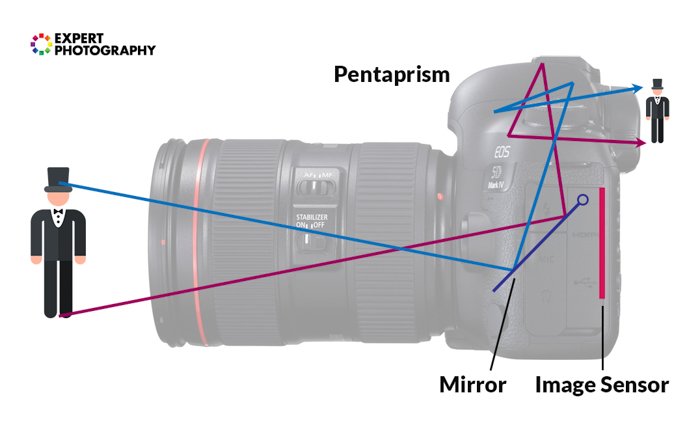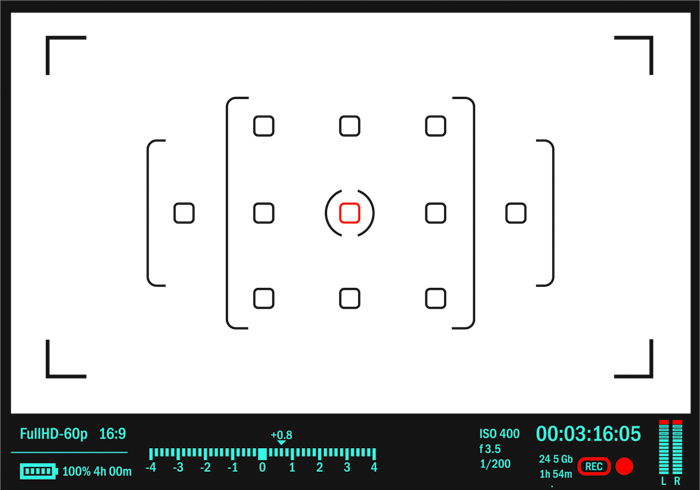What Is Phase Detection Autofocus? (And Why It’s So Important)
What Is Autofocus?
Let’s start with the basics. There are two types of focus: auto and manual.
Manual focus is when the user has to control the focus by turning the focusing ring left or right to achieve focus. In new cameras, we often have a so-called focus peaking feature, helping this procedure.
Autofocus is when the camera does this all for you. It uses a computer to run a miniature motor that will turn the focus ring.
You even have the option to switch AF-MF back and forth on your lens or in-camera. If you press the shutter button halfway down, you activate AF. After this, you can use the manual focus ring to fine-tune your focus.
This focus ring moves an internal component of the lens in and out. This action repeats until the sharpest image of the subject is projected. But let’s break it down into a more detailed explanation.

All digital cameras have a histogram. These tell you the exposure of what you are photographing. The histogram shows you a review of how evenly exposed your photo is, after you have taken it.
Contrast detection autofocus works by evaluating this histogram (which communicates with the sensor). The camera then moves the lens incrementally. It keeps reevaluating to see if there is more or less contrast to what you are shooting.
If the camera detects contrast increase, it moves the lens in that higher contrast direction until it hits its full potential. If the contrast decreases, the camera moves the lens in the other direction.
This process is repeated over and over again until there is high contrast. Contrast detection helps you to achieve a well-focused image with high contrast.
With phase detection autofocus, think a bit of the moon and its various phases. For the camera, when a specific point finds itself being in perfect focus, there are light rays.
A photograph that is in focus will have light rays that will cast a light on the opposite sides of the lens. This is when the term ‘in phase’ comes about, like how phases of the moon work.
The camera can figure out when the focus is not achieved because the opposite side is no longer illuminated (known as not being in phase). This happens when the lens is not focused correctly on the point. It may be in front of or behind it.
How to Understand Phase Detection Autofocus
There are prisms located inside your camera. For phase detection, the image you see hits the prism and then separates into two images. If these images line up together, your subject is in focus. If they don’t line up together, then your subject is out of focus.
Part of the reason that DSLR cameras are so heavy is that they have an actual prism inside of them. This splits the image onto the focus sensor.
So, how do you get something in focus in this case? It sounds a lot like a guessing game, doesn’t it? Actually, cameras are smarter than that.
The sensor inside the camera is aware of which split image is which. As such, it can communicate to the camera and let it know in which direction it should move the focus to ensure that the images line up.
Let’s make it more advanced.
Remember us mentioning light rays above? Light rays pass through the lens, and this light gets detected by the AF sensor. The autofocus system can then determine if the subject is focused on the front or the back. The camera receives direct information on how it should turn the focus ring to lock on the subject.
Mirrorless cameras are smaller and lighter because they achieve the same result by doing this on the sensor.
Once the images are aligned, the system sends a confirmation message that the subject is in focus. And all of this complexity happens in a fraction of a second!
Phase detection AF system is great for capturing movement because it is incredibly fast.
Now, if you’ve ever been in the buying game, you’ve likely heard about phase detection points. A digital camera has a certain number of these points. There are many AF sensor points where it can compare the split image. The more of these you have, the more accurate the focus is.
Sony’s A7 III mirrorless has the lead in this, with 693 points, which cover 93% of the image area. This means that it has a much higher chance of focusing correctly than a camera which has significantly fewer focus points.
What Is Phase Detection Autofocus Used For?
This type of autofocus is very well suited for action photography. It works best when used with image tracking and AI/AF Servo/Continuous Focus modes.
Some newer focusing techniques have been introduced in the last couple of years as well. For example, Sony’s Eye AF system is specifically made for animal photography. It is tracking the animal’s eyes to find focus. Face detection AF system does the same but for human faces — and is pretty accurate.
Phase detection works for other types of photography too, such as portraits and still life. But action photographers will be the most grateful for the inclusion of this system.
There are several other advantages of phase detection autofocus. These include being fast and allowing the sensor to assess the image’s depth of field.
You can also get an accurate idea of how the depth of field will look before you even take a shot.
What Are The Downsides Of Phase Detection?
This is a complex process that needs precision. The phase detection software needs to be installed and aligned properly. Otherwise, it can cause the autofocus to be off. This causes a sensor alignment problem.
Once the camera detects this problem, it automatically calibrates the focus points. This is why it is super important to keep your camera’s firmware updated.
It may not be able to focus on low contrast subjects as accurately as other focus modes. It also finds it hard to focus in low light.
These problems apply to contrast-detection autofocus as well. But overall, that way of focusing is more accurate when it comes to difficult light situations. With contrast detection, there is no need for lens calibration.

Understanding how phase detection autofocus works definitely comes in handy. You can get rid of several focusing issues, and know when something isn’t working correctly in your camera.
Try it out, experiment and enjoy the benefits!
------------------------------------------------------------------------------------------------
Ebay Camera Deals!




No comments:
Post a Comment
Note: Only a member of this blog may post a comment.